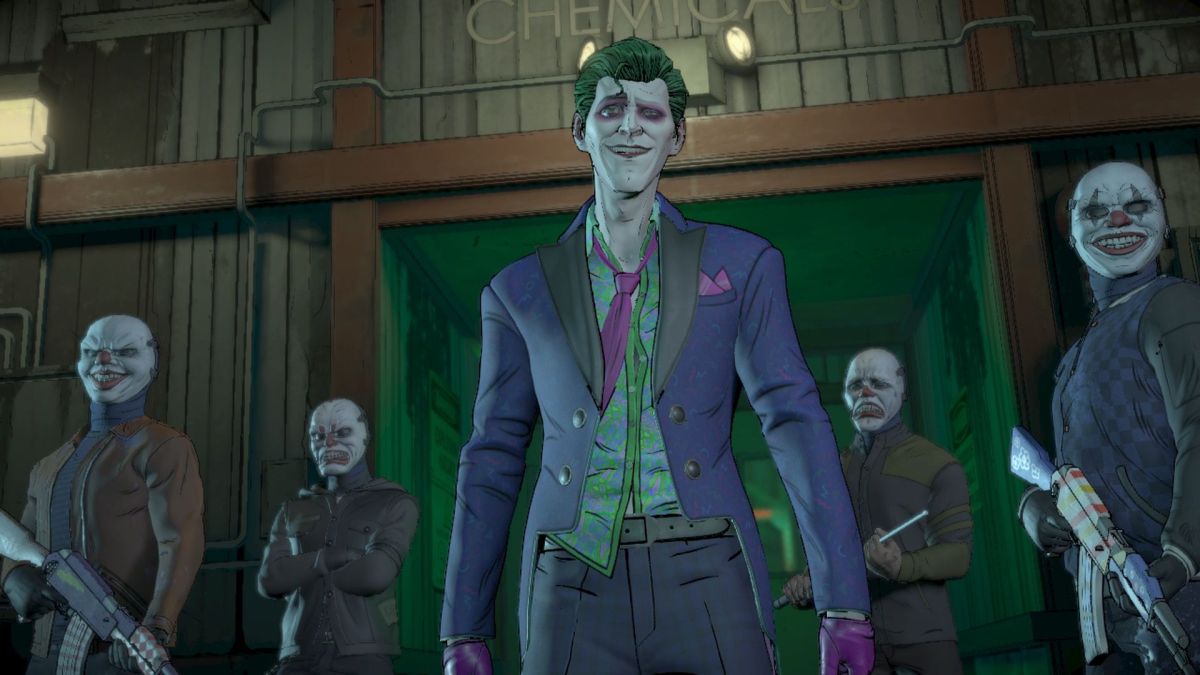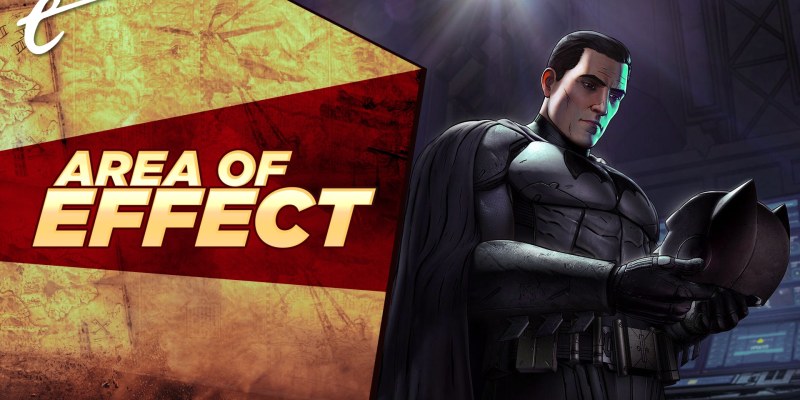The following article contains spoilers for Batman: The Telltale Series.
“I am vengeance! I am the night! I am… the Joker!” Granted, that’s not quite how Bruce Timm, co-creator of Batman: The Animated Series, put it, but the way Batman: The Telltale Series turns the would-be villain into a heroic if over-enthusiastic vigilante is a masterstroke. And it’s proof that if you really want to make the most of an established mythos, you really need to ask, “What if?”
Licensed games are less common than they once were; there was a point when every other comic or movie ended up a 2D actioner, with a handful of mini-games thrown in. The Blues Brothers? 2D action game. Gremlins 2? 2D action game. Clive Barker’s Nightbreed? 2D action game. Schindler’s List? 2D action game. And I’ve only made one of those up.
But the problem with licensed games, particularly superhero ones, is that everyone and their dog knows what to expect. Even if you’ve spent the last 50 years in a cave, subsisting on algae and toenail clippings, you know that Bruce Wayne is Batman, the Joker is his murderous arch-nemesis, and Bane should stop filling his veins with Monster Energy Drink.
If you’re a long-time Batfan, there are even fewer surprises; you’ll have seen Batman take on virtually every one of his foes, you’ll have witnessed his allies die and then either return to life through some supernatural means or just pop back into existence the next time copyright holder DC Comics has a big crossover event. That’s why Telltale’s Batman has to work hard to keep you on your toes, and asking “What if?” is the perfect way to go about it. And it’s not just the little things that the fittingly defunct-and-ostensibly-revived development house changed.

The driving force behind Batman’s existence, the tragedy that turned Bruce Wayne into Batman, is that his parents were innocent victims of an alleyway mugging. But what if there were more to it? What if they weren’t so innocent? How can Bruce Wayne justify his role as the Dark Knight when, as revealed by Season 1’s big twist, his parents were the kind of people Batman would have thrown behind bars? And that’s just the tip of the iceberg; there are less noticeable but equally significant changes that will knock you for six.
If that weren’t enough to shake things up, to convince you there’s very little about Telltale’s Batverse that you can take for granted, Batman Season 2 goes all out. I wasn’t that curious about whatever Bruce Wayne’s parents had been up to till Telltale brought it up, but I’d often wondered, “What if the Joker were one of the good guys?”
The second season explores that possibility in a way that feels entirely uncontrived; even though John Doe, later Joker, has major issues, your actions determine whether he’s an unbalanced hero or a deranged villain. It’s a blessing that DC gave Telltale the freedom to create its own world from scratch, a world where it could explore these possibilities.
Assuming, that is, you follow that particular path — for all the what-ifs, there’s the temptation to go with What “Should” Be. If Joker is meant to be a monster, who are you to argue? Why not push him all the way along that path? Except… doesn’t that make you the bigger monster? Alternate scenarios are more common when it comes to non-licensed games, such as Final Fantasy VII Remake, which explored an alternate continuity. But it’s licensed material that offers the greatest potential dividends.

Though Disney probably wouldn’t countenance it today, Star Wars: The Force Unleashed II’s DLC saw you prevent the events of Return of the Jedi by slaughtering Chewbacca and Han Solo. Likewise, canceled Star Wars Battlefront sequels seemed set to explore a similar, mirror-universe-style scenario, with an Evil Obi-Wan Kenobi, a Light Side Darth Maul, and more. And Scarface: The World Is Yours explored what might have happened if Tony Montana lived, though it admittedly undermines the film’s message.
I can’t think of a better way to keep players guessing than by taking what they know and turning it upside down, which is precisely what Batman: The Telltale Series accomplishes. As soon as I realized Telltale wasn’t playing by the “rules,” I was hooked, and I’d love to see this approach applied to more licenses. So why isn’t this a more common practice?
Apart from the fact that licensed games are rarer these days, I suspect it’s because companies get very attached to their characters and are particularly conscious of how they’re portrayed. Batman: The Telltale Series lets you lean into Bruce’s brutality, but Batman’s generally portrayed as a dark, brooding character. If, on the other hand, you wanted to portray Indiana Jones as a secret Nazi agent, you wouldn’t get past Lucasfilm’s front door.
It’s a shame that, after two seasons of Batman: The Telltale Series, we’re never going to get a third season that continues to confound Batfans’ expectations. Hopefully those who worked on it are somewhere where their talents are appreciated. But it proves that, even if it means staring down a boardroom of angry lawyers, asking “What if?” can do wonders for a game.
